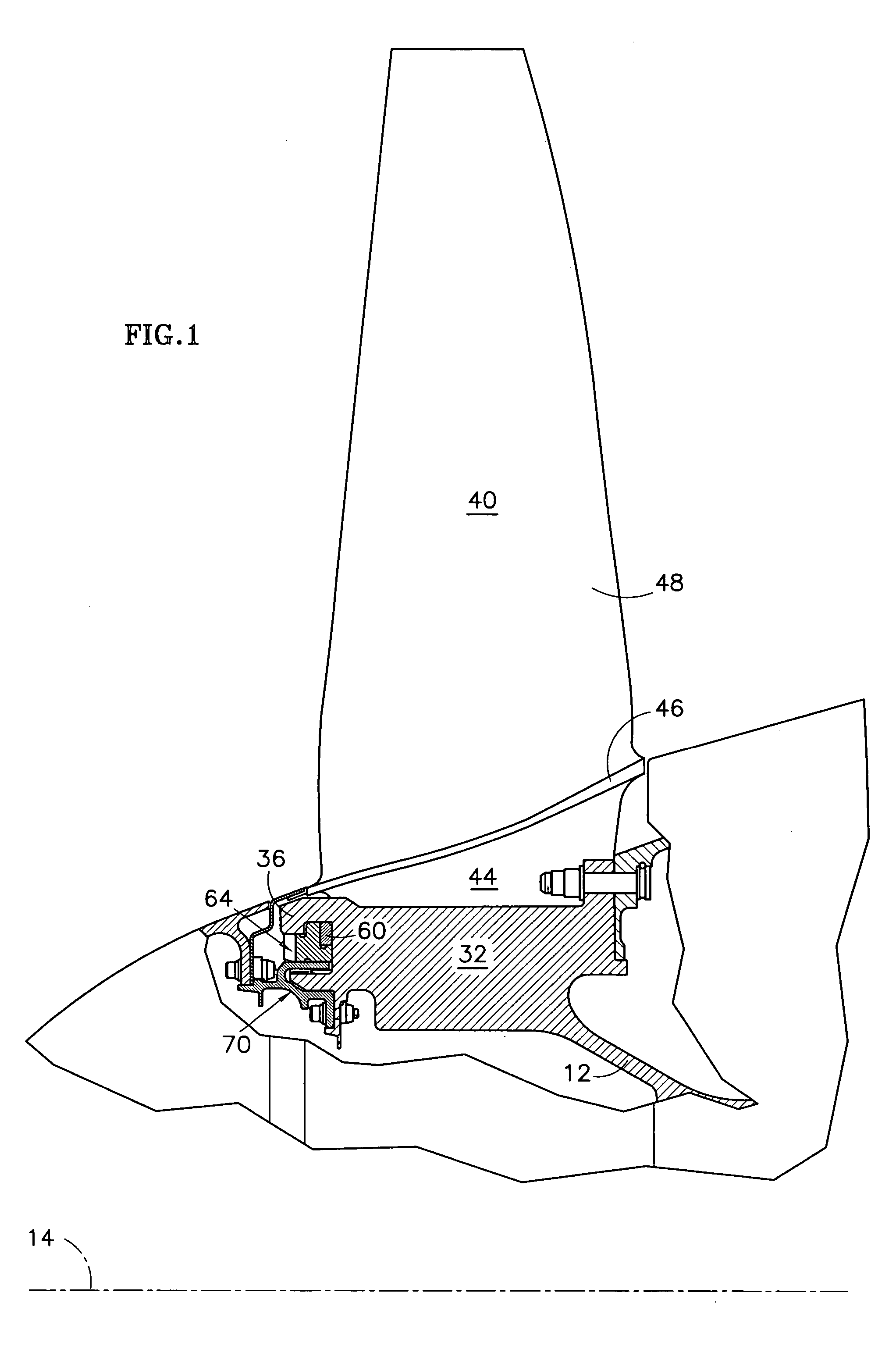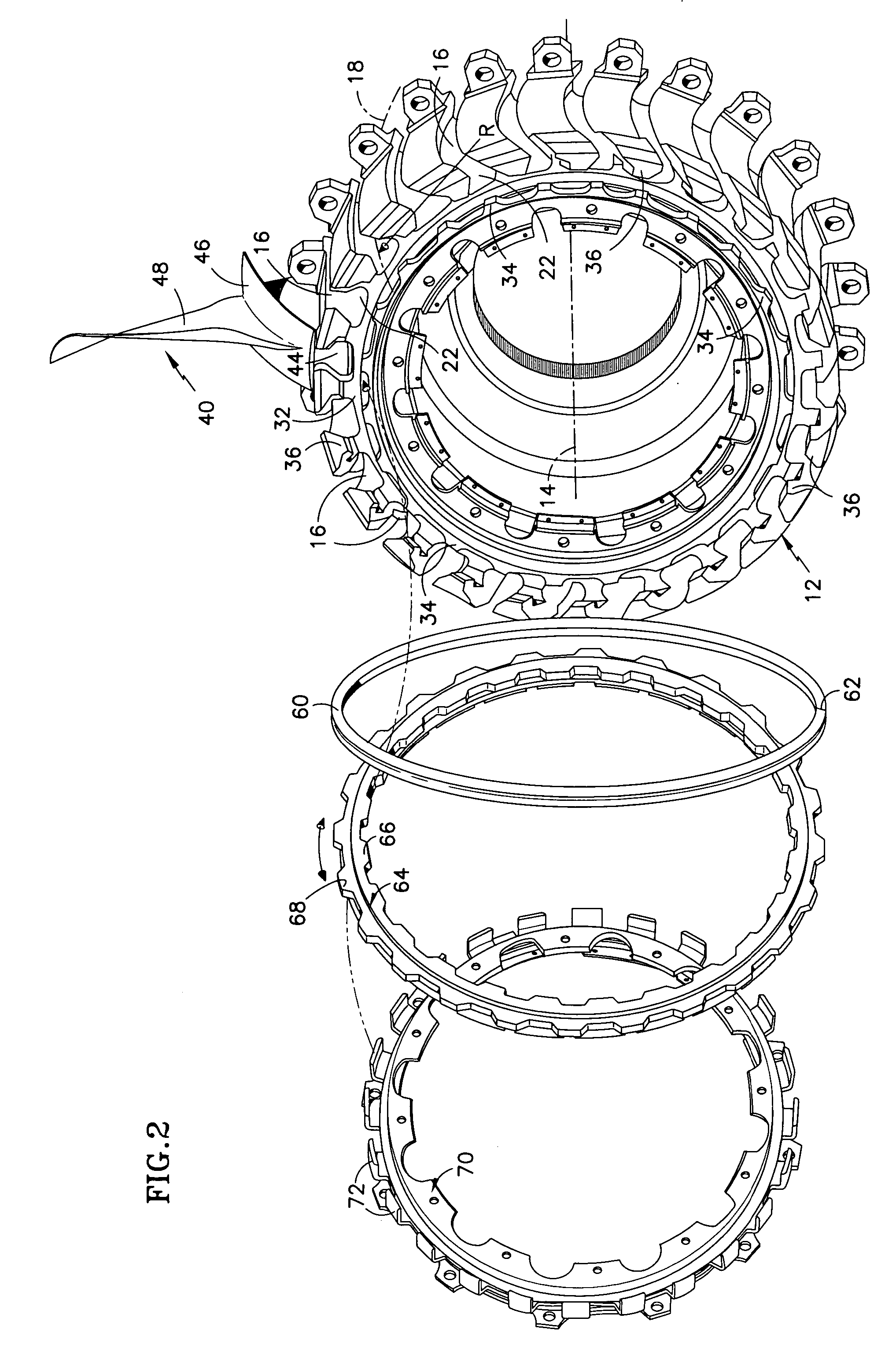Attachment for a bladed rotor
a technology of axial retention and blades, which is applied in the direction of liquid fuel engines, vessel construction, marine propulsion, etc., can solve the problems of inordinately difficult to accommodate the separation of two or more blades without introducing excessive weight, cost or complexity into the engine, and preventing the separation of multiple blades. , the effect of preventing or minimizing damage to the hub and blades
- Summary
- Abstract
- Description
- Claims
- Application Information
AI Technical Summary
Benefits of technology
Problems solved by technology
Method used
Image
Examples
Embodiment Construction
[0031]Referring principally to FIGS. 1 and 2, a fan rotor of an aircraft gas turbine engine includes a hub 12 rotatable about a rotational axis 14. The hub includes a series of circumferentially distributed peripheral slots 16. The illustrated slots, when viewed by an observer looking radially toward the axis, have a curved centerline 18 and a correspondingly curved profile. The centerline has a radius of curvature R. Alternatively, the slots may be linear slots having a linear centerline oriented parallel or oblique to the rotational axis. A slot opening 22 at the forward end of the hub, the aft end of the hub or both accommodates installation or removal of fan blades, described below, in the axial direction. As used throughout this specification, the term “axial” refers not only to a direction strictly parallel to the rotational axis but also to directions somewhat non-parallel to the axis, such as the slotwise direction defined by a curved or linear slot. As seen best in FIG. 9, ...
PUM
 Login to View More
Login to View More Abstract
Description
Claims
Application Information
 Login to View More
Login to View More - R&D
- Intellectual Property
- Life Sciences
- Materials
- Tech Scout
- Unparalleled Data Quality
- Higher Quality Content
- 60% Fewer Hallucinations
Browse by: Latest US Patents, China's latest patents, Technical Efficacy Thesaurus, Application Domain, Technology Topic, Popular Technical Reports.
© 2025 PatSnap. All rights reserved.Legal|Privacy policy|Modern Slavery Act Transparency Statement|Sitemap|About US| Contact US: help@patsnap.com



